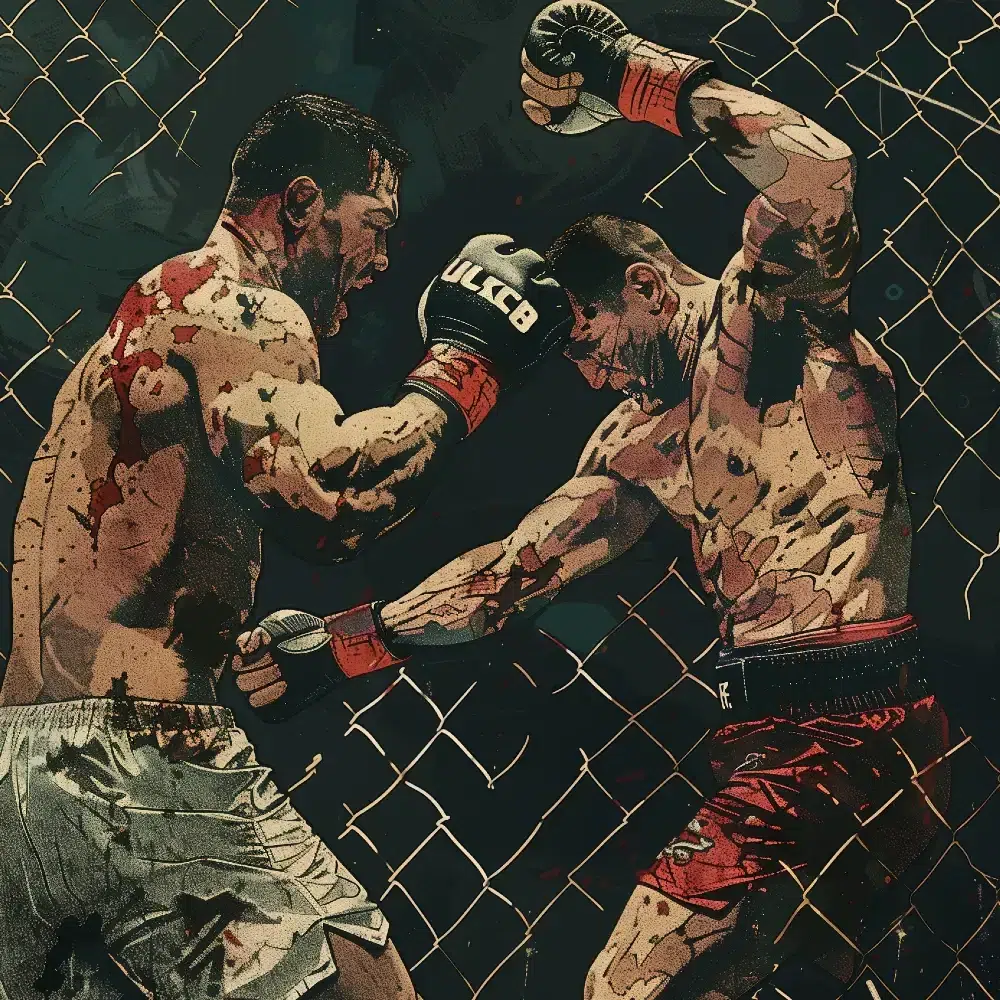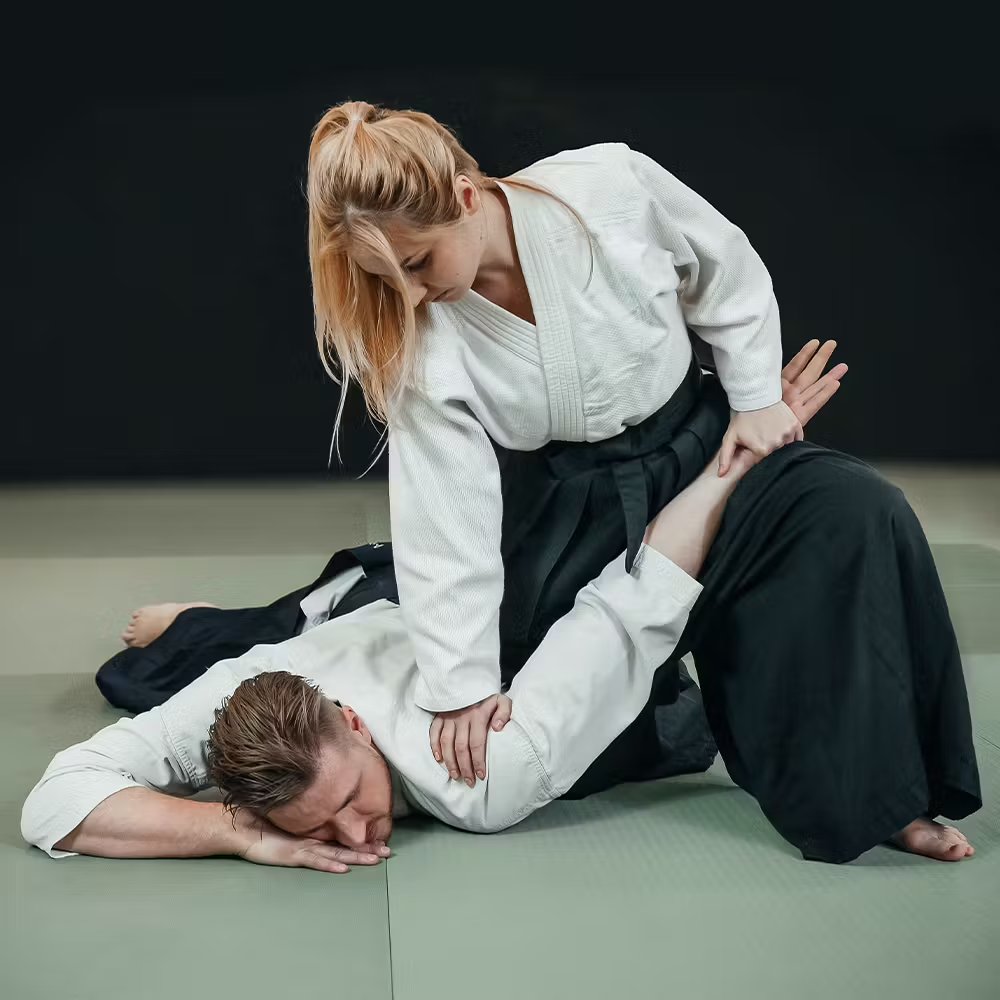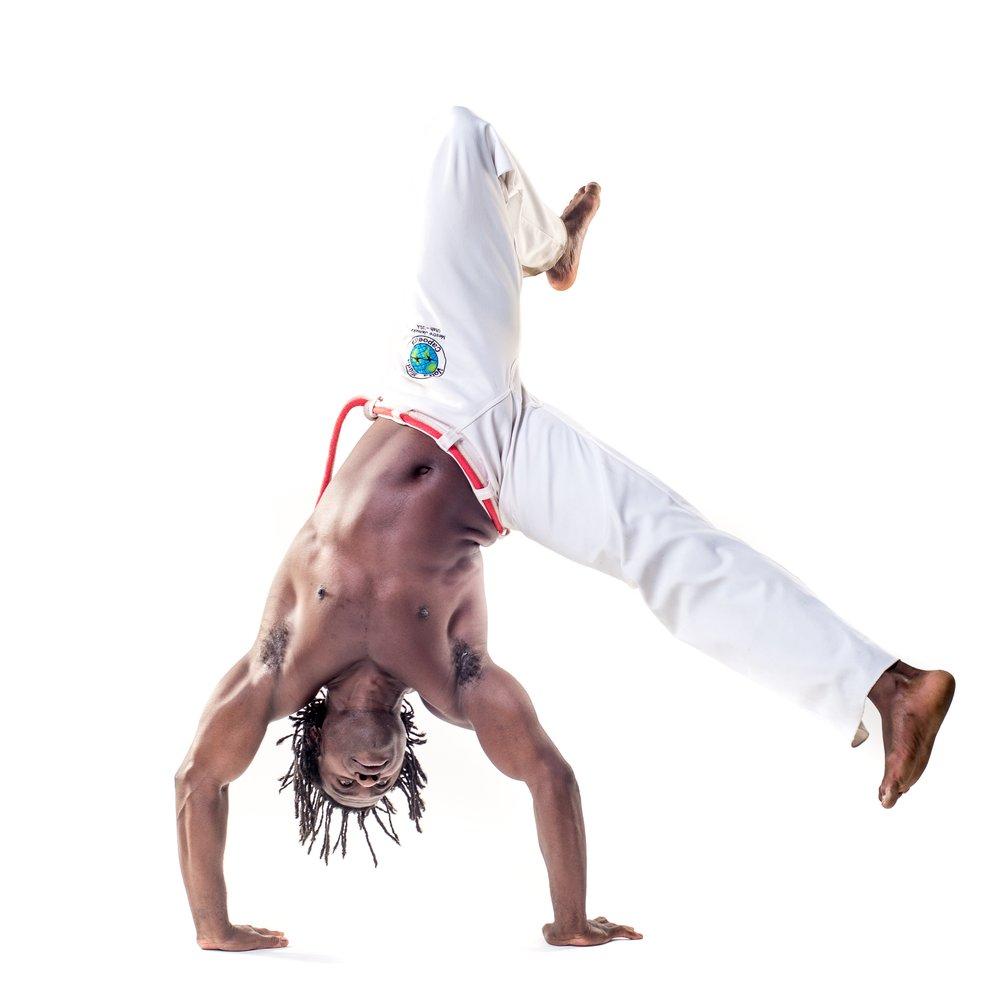25 Combat Sports to Explore Beyond Martial Arts

Combat sports have been a part of human culture for millennia, evolving from ancient martial traditions to modern competitive disciplines.
These sports are mostly all about human physical ability, strategy, and mental fortitude.
But not all are the same.
Some test your mental agility far more than your physical strength.
From the raw power of boxing to the fluid grace of aikido, combat sports offer diverse techniques, philosophies, and physical challenges.
So, if you’re a seasoned martial artist or a curious newcomer, prepare to know more about these combat sports.
List of Combat Sports Around the World
1. Boxing

Boxing is a classic combat sport where two fighters face off, using their fists to strike their opponent while defending against incoming blows.
Boxers wear padded gloves and aim to land clean, powerful punches on their opponents’ upper bodies and heads.
The sport demands exceptional hand-eye coordination, footwork, and cardiovascular endurance.
Boxing matches can be won by knockout, technical knockout, or judges’ decision based on the scoring of effective punches landed.
| Aspect | Description |
|---|---|
| Primary Techniques | Punches (jab, cross, hook, uppercut) |
| Protective Gear | Gloves, mouthguard, headgear (amateur) |
| Rounds | Professional: 12 rounds, Amateur: 3-4 rounds |
| Weight Classes | From strawweight to heavyweight |
2. Karate

Karate is a Japanese martial art that emphasizes striking techniques using hands, feet, elbows, and knees.
Practitioners, known as karateka, train in katas (formal exercises) and kumite (sparring).
Karate focuses on self-defense, physical fitness, and mental discipline.
In competition, points are awarded for clean, controlled strikes to designated target areas on the opponent’s body.
| Aspect | Description |
|---|---|
| Main Styles | Shotokan, Goju-Ryu, Wado-Ryu, Shito-Ryu |
| Techniques | Punches, kicks, blocks, strikes |
| Training Focus | Katas, sparring, breaking techniques |
| Attire | Gi (uniform), colored belts indicating rank |
3. Judo

Judo, which means “gentle way” in Japanese, is a modern martial art that focuses on throws, takedowns, and ground grappling.
Practitioners aim to use their opponent’s energy against them, emphasizing technique over brute strength.
Judo matches can be won by throwing an opponent onto their back, pinning them to the ground, or forcing a submission through joint locks or chokes.
| Aspect | Description |
|---|---|
| Key Techniques | Throws, sweeps, pins, submissions |
| Competition Area | Tatami mat |
| Scoring | Ippon (full point), Waza-ari (half point) |
| Uniform | Judogi (heavy cotton jacket, pants, belt) |
4. Taekwondo

Taekwondo is a Korean martial art known for its emphasis on kicking techniques and dynamic footwork.
It combines combat techniques, self-defense, sport, exercise, and philosophy.
Taekwondo practitioners develop powerful, high kicks and fast combinations.
In competition, strikes to the body protector and head earn points, with extra points awarded for more difficult techniques like spinning kicks.
| Aspect | Description |
|---|---|
| Primary Techniques | Various kicks, punches, blocks |
| Protective Gear | Head guard, chest protector, shin guards |
| Governing Body | World Taekwondo (WT) for Olympic style |
| Belt System | White to black, with colored belts in between |
5. Brazilian Jiu-Jitsu

Brazilian Jiu-Jitsu (BJJ) is a grappling-based martial art that focuses on ground fighting and submission holds.
Practitioners learn to control and submit their opponents using joint locks and chokeholds.
BJJ emphasizes technique and leverage, allowing smaller practitioners to defend against larger opponents effectively.
Competitions can be won by submission or points awarded for achieving dominant positions.
| Aspect | Description |
|---|---|
| Key Techniques | Takedowns, sweeps, submissions, positional control |
| Training Focus | Ground fighting, guard work, submissions |
| Uniform | Gi (traditional) or rashguard and shorts (no-gi) |
| Belt Ranks | White, blue, purple, brown, black |
6. Kickboxing

Kickboxing is a striking-based combat sport that combines elements of boxing with kicking techniques from various martial arts.
Fighters use punches, kicks, knees, and sometimes elbows to strike their opponents.
Kickboxing matches are fast-paced and dynamic, requiring excellent conditioning and versatile striking skills.
Victories can be achieved through knockout, technical knockout, or judges’ decision.
| Aspect | Description |
|---|---|
| Techniques | Punches, kicks, knee strikes, clinch work |
| Protective Gear | Gloves, mouthguard, shin guards |
| Styles | American, Dutch, Japanese (K-1) |
| Rounds | Typically 3-5 rounds of 2-3 minutes each |
7. Sambo

Sambo is a Russian martial art and combat sport that combines elements of judo, wrestling, and other grappling arts.
It emphasizes throws, locks, and ground fighting techniques.
Sambo was developed for military hand-to-hand combat but has evolved into a competitive sport.
Three main types are Sport Sambo, Combat Sambo (which allows strikes), and Freestyle Sambo.
| Aspect | Description |
|---|---|
| Key Techniques | Throws, leg locks, armlocks, chokes |
| Uniform | Jacket, shorts, and special shoes |
| Scoring | Points for throws, pins, and submission attempts |
| Origins | Developed in the Soviet Union in the 1920s |
8. Sumo

Sumo is a traditional Japanese wrestling sport with a rich cultural history.
Two large wrestlers compete to force each other out of a circular ring or to touch the ground with any part of their body other than the soles of their feet.
Matches are often brief but intense, combining raw power with technique and strategy.
Sumo wrestlers live a highly disciplined lifestyle, adhering to strict traditions and training regimens.
| Aspect | Description |
|---|---|
| Arena | Dohyō (raised clay ring) |
| Attire | Mawashi (loincloth) |
| Winning Methods | Forcing the opponent out or down |
| Ranking System | Complex hierarchy from Jonokuchi to Yokozuna |
9. Fencing

Fencing is a combat sport that involves dueling with bladed weapons.
Modern fencing uses three types of weapons: foil, épée, and saber, each with its own rules and target areas.
Fencers aim to score points by making contact with their opponent using the tip or edge of their weapon.
The sport requires quick reflexes, strategic thinking, and precise movements.
| Aspect | Description |
|---|---|
| Weapons | Foil, épée, sabre |
| Protective Gear | Mask, jacket, glove, breeches |
| Scoring | Electronic scoring system |
| Bout Duration | First to 5 or 15 points, or timed periods |
10. Muay Thai

Muay Thai, known as the “Art of Eight Limbs,” is a striking-based martial art from Thailand.
It utilizes punches, kicks, elbow strikes, and knee strikes, along with clinching techniques.
Muay Thai is known for its powerful and efficient strikes, especially its devastating leg kicks and elbow techniques.
Practitioners develop a strong clinch game and the ability to attack and defend in close quarters.
| Aspect | Description |
|---|---|
| Key Techniques | Punches, kicks, elbows, knees, clinch work |
| Traditional Elements | Wai Kru (pre-fight ritual), Mongkon (headband) |
| Rounds | Typically 5 rounds of 3 minutes each |
| Training Focus | Pad work, bag work, clinch training, sparring |

Wrestling is one of the oldest forms of combat, involving grappling techniques such as clinch fighting, throws, takedowns, and pins.
There are various styles of wrestling, including freestyle, Greco-Roman, and folk style.
Wrestlers aim to control their opponent and score points through takedowns and near falls or to win by pinning their opponent’s shoulders to the mat.
| Aspect | Description |
|---|---|
| Styles | Freestyle, Greco-Roman, Folk-style |
| Competition Area | Wrestling mat |
| Scoring | Points for takedowns, escapes, reversals, near falls |
| Weight Classes | Multiple divisions to ensure fair competition |
12. MMA (Mixed Martial Arts)

Mixed Martial Arts is a full-contact combat sport that combines techniques from various martial arts disciplines.
Fighters use a mix of striking and grappling techniques, both standing and on the ground.
MMA matches take place in a cage or ring and can be won by knockout, submission, or judges’ decision.
The sport requires a diverse skill set and the ability to adapt to different fighting styles.
| Aspect | Description |
|---|---|
| Techniques | Striking, wrestling, Brazilian Jiu-Jitsu, clinch work |
| Arena | Octagon (UFC) or ring |
| Rounds | Typically 3 or 5 rounds of 5 minutes each |
| Weight Classes | From flyweight to heavyweight |
13. Aikido

Aikido is a Japanese martial art focused on redirecting an attacker’s energy and momentum to neutralize threats without causing harm.
Practitioners learn to blend with an attack and use an opponent’s force against them.
Aikido techniques include joint locks, throws, and pins, often performed circularly.
The art emphasizes harmony, both physical and spiritual, and is often practiced for self-improvement and self-defense.
| Aspect | Description |
|---|---|
| Key Principles | Blending, redirecting energy, circular motion |
| Techniques | Joint locks, throws, pins, evasions |
| Training Focus | Kata practice, partner drills, ukemi (falling) |
| Attire | Gi (uniform), hakama (traditional Japanese trousers) |
14. Wing Chun

Wing Chun is a Chinese martial art that specializes in close-range combat.
It emphasizes efficient, direct movements and economy of motion.
Practitioners develop sensitivity to an opponent’s movements through chi sao (sticky hands) drills.
Wing Chun techniques include rapid strikes, trapping, and simultaneous attack and defense.
| Aspect | Description |
|---|---|
| Key Concepts | Centerline theory, simultaneous attack and defense |
| Training Methods | Forms, chi sao (sticky hands), wooden dummy |
| Notable Techniques | Chain punching, trapping, low kicks |
| Famous Practitioners | Ip Man, Bruce Lee |
15. Kung Fu

Kung Fu, also known as Gong Fu, is a broad term encompassing various Chinese martial arts styles.
These styles range from hard external techniques to soft internal practices.
Kung Fu training often includes forms (sequences of movements), weapon training, and sparring.
Many styles are inspired by animal movements and emphasize fluidity, balance, and explosive power.
| Aspect | Description |
|---|---|
| Styles | Shaolin, Wing Chun, Tai Chi, Baguazhang, and many more |
| Training Elements | Forms, weapon training, qigong, sparring |
| Philosophy | Often incorporates Buddhist or Taoist principles |
| Cultural Significance | Deeply rooted in Chinese history and culture |
16. Tai Chi

Tai Chi, also known as Tai Chi Chuan, is a Chinese martial art known for its slow, flowing movements and focus on internal energy cultivation.
While often practiced for health benefits, Tai Chi has martial applications rooted in redirecting an opponent’s force.
Practitioners develop balance, flexibility, and a deep understanding of body mechanics.
Tai Chi emphasizes relaxation, proper breathing, and mindfulness, making it both a meditative practice and a subtle yet effective martial art.
| Aspect | Description |
|---|---|
| Styles | Yang, Chen, Wu, Sun, Hao |
| Key Principles | Softness overcoming hardness, circular movements |
| Training Focus | Forms, push hands, qigong exercises |
| Health Benefits | Improved balance, stress reduction, flexibility |
17. Wushu

Wushu is a form of contemporary Chinese martial arts that combines traditional fighting techniques with acrobatic and performance elements.
It includes both armed and unarmed routines featuring explosive movements, intricate stances, and high-flying kicks.
Wushu competitions are judged on form, difficulty, and overall performance.
While primarily a performance art, some styles of Wushu also include combat training and sparring.
| Aspect | Description |
|---|---|
| Divisions | Taolu (forms), Sanda (full-contact fighting) |
| Weapons | Staff, sword, spear, chain whip, and more |
| Judging Criteria | Difficulty, quality of movements, overall impression |
| Physical Demands | High level of flexibility, strength, and coordination |
18. Baguazhang (Bajiquan)

Baguazhang is an internal Chinese martial art known for its circular walking patterns and palm techniques.
It emphasizes continuous, flowing movements and rapid changes in direction.
Practitioners learn to move unpredictably, evading attacks while positioning themselves for powerful counterstrikes.
Baguazhang’s philosophy is deeply rooted in Taoist principles, particularly the concept of change as represented by the Eight Trigrams.
| Aspect | Description |
|---|---|
| Key Techniques | Palm strikes, circular footwork, joint locks |
| Training Methods | Circle walking, single palm change, partner drills |
| Philosophical Base | Eight Trigrams, Taoist principles |
| Application | Self-defense, health cultivation |
19. Krav Maga

Krav Maga is a military self-defense system developed for the Israel Defense Forces.
It emphasizes practical, real-world self-defense techniques and neutralizing threats quickly and efficiently.
Krav Maga incorporates martial arts and combat sports elements, focusing on instinctive movements and aggressive counterattacks.
Training often includes scenario-based exercises to prepare practitioners for real-life confrontations.
| Aspect | Description |
|---|---|
| Focus | Practical self-defense, neutralizing threats quickly |
| Techniques | Strikes, grappling, weapon defenses |
| Training Approach | Stress drills, scenario-based exercises |
| Origins | Developed in Israel for military and law enforcement |
20. Capoeira

Capoeira is a Brazilian martial art that combines dance, acrobatics, and musical elements.
Practitioners, known as capoeiristas, engage in a “game” within a circle formed by other players.
Capoeira emphasizes fluid, rhythmic movements, deceptive kicks, and evasive techniques.
The art form has a strong cultural component, with music and singing integral to its practice.
| Aspect | Description |
|---|---|
| Key Movements | Cartwheels, kicks, sweeps, headbutts |
| Music | Berimbau, pandeiro, atabaque instruments |
| Game Styles | Angola (slow, low), Regional (faster, more acrobatic) |
| Cultural Significance | Roots in African slave culture in Brazil |
21. Kendo

Kendo is a Japanese martial art based on traditional swordsmanship.
Practitioners use bamboo swords (shinai) and protective armor to simulate sword combat.
Kendo emphasizes proper form, disciplined movements, and respect for opponents.
Matches involve striking specific target areas on the opponent’s body, with points awarded for correct technique and spirit.
| Aspect | Description |
|---|---|
| Equipment | Shinai (bamboo sword), bogu (protective armor) |
| Target Areas | Men (head), Kote (wrists), Do (torso), Tsuki (throat) |
| Training Elements | Kata, sparring, footwork drills |
| Etiquette | Strong emphasis on respect and proper conduct |
22. Jeet Kune Do

Jeet Kune Do is a hybrid martial art and life philosophy developed by Bruce Lee.
It emphasizes practicality, flexibility, and efficiency in combat.
Jeet Kune Do practitioners are encouraged to absorb what is useful from various martial arts and discard what is not.
The style focuses on intercepting attacks and economic movements and adapting to different situations.
| Aspect | Description |
|---|---|
| Core Principles | Simplicity, directness, non-classical approach |
| Techniques | Trapping, interception, straight blast |
| Philosophy | “Using no way as way, having no limitation as limitation.” |
| Training Methods | Sparring, focus mitts, wooden dummy |
23. Jujutsu

Jujutsu is a Japanese martial art focusing on grappling, throwing, and joint locks.
It emphasizes using an opponent’s energy against them rather than directly opposing force with force.
Jujutsu techniques include striking, throwing, restraining, and weaponry.
Many modern grappling arts, including judo and Brazilian jiu-jitsu, have roots in traditional jujutsu.
| Aspect | Description |
|---|---|
| Key Techniques | Joint locks, throws, chokes, strikes |
| Philosophy | Efficiency, adaptability, using the opponent’s force |
| Variations | Many traditional and modern styles |
| Historical Use | Samurai battlefield combat, self-defense |
24. Savate

Savate, also known as French boxing, is a combat sport that combines elements of Western boxing with graceful kicking techniques.
Practitioners, called saboteurs, use both hands and feet to strike, with a strong emphasis on footwork and mobility.
Savate is known for its fluid movements and unique kicking techniques with shoes on.
Competitions involve both full-contact bouts and technical demonstrations of form.
| Aspect | Description |
|---|---|
| Striking Surfaces | Fists and feet (with shoes) |
| Key Techniques | Various kicks, punches, and knee strikes |
| Equipment | Boxing gloves, savate boots |
| Origins | Developed in French naval and street fighting |
25. Silat

Silat is a collective term for indigenous martial arts from the Malay Archipelago.
It encompasses various fighting styles, each with techniques and cultural influences.
Silat typically involves strikes, joint manipulation, throws, and weapon techniques.
Many styles of Silat incorporate elements of spirituality and traditional healing practices.
| Aspect | Description |
|---|---|
| Variations | Hundreds of styles across Southeast Asia |
| Techniques | Strikes, grappling, weapons, animal-inspired movements |
| Cultural Elements | Often includes dance, spiritual practices |
| Training Focus | Self-defense, physical fitness, cultural preservation |
Conclusion
It’s amazing to see how many different ways people have developed to test their skills against each other.
These sports aren’t just about fighting – discipline, respect, and pushing yourself to improve.
What I love most about these sports is how they bring people together.
You might start training to get fit or learn self-defense, but you’ll probably make some great friends.
And let’s be honest, there’s nothing quite like the rush of stepping onto the mat or into the ring!
So, whether you’re thinking of trying one out or enjoy watching from the sidelines, combat sports have a lot to offer.
They’re tough, they’re exciting, and they’re a great way to challenge yourself.
Who knows? Maybe you’ll find your new passion in one of these awesome sports!






